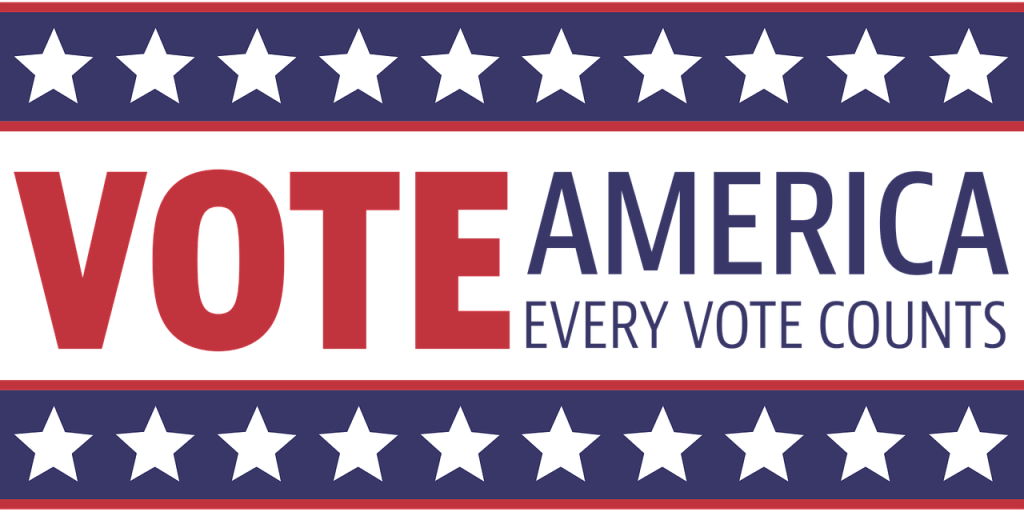The Unseen Forces: The Impacts Voting in House Elections
How Age Impacts Voting in House Elections: If you’re wondering how different age groups vote in House elections and why it matters, you’re not alone. Understanding voting patterns among different age groups is crucial in predicting electoral outcomes and shaping political campaigns. From Baby Boomers to Gen Z, each generation has its unique political beliefs, values, and priorities that influence their voting behavior.
In the 2022 midterm elections, younger voters, Black voters, and those living in urban areas continued to support Democratic candidates, while older, White and rural voters backed Republicans. According to a report by Pew Research Center, this trend is not new and has been consistent in previous elections. However, what makes the 2022 elections unique is the significant increase in voter turnout among younger generations, particularly Gen Z. A report by Tufts University’s Center for Information and Research on Civic Learning and Engagement (CIRCLE) found that Gen Z voted at a higher rate in 2022 than previous generations in their first midterm elections. This increased engagement among younger voters could have a significant impact on future electoral outcomes and policy decisions.
Understanding the generation gap in voting patterns is not only essential for political campaigns and election predictions but also for shaping policy decisions that affect different age groups. For instance, policies that address issues such as student debt, climate change, and healthcare are likely to resonate more with younger voters, while policies that prioritize national security and immigration may appeal more to older voters. As the country becomes more diverse and the population ages, understanding the generation gap in voting patterns will become increasingly important in shaping the future of American politics.
Understanding Generational Voting Patterns
Generational voting patterns have been a topic of interest for political scientists for decades. Understanding how different age groups vote and why they vote the way they do can provide valuable insights into the political landscape and help predict future election outcomes. Here’s a breakdown of the voting behavior of different generations in the House elections.
Baby Boomers’ Voting Behavior
Baby Boomers, born between 1946 and 1964, are the largest generation in the United States. They have consistently voted in high numbers, with a majority of them identifying as conservative. In recent years, they have leaned towards the Republican Party, with 51% of them voting for Republican candidates in the 2022 House elections. Baby Boomers tend to prioritize issues such as national security, healthcare, and the economy.
Generation X’s Voting Behavior
Generation X, born between 1965 and 1980, is a smaller generation than Baby Boomers and Millennials. They have been known to be more skeptical of institutions, including political parties. In the 2022 House elections, 46% of them voted for Democratic candidates, while 52% voted for Republicans. Generation X tends to prioritize issues such as job security, education, and healthcare.
Millennials’ Voting Behavior
Millennials, born between 1981 and 1996, are the largest generation in the workforce. They have been known to be more progressive and socially liberal than previous generations. In the 2022 House elections, 56% of them voted for Democratic candidates, while 42% voted for Republicans. Millennials tend to prioritize issues such as climate change, racial justice, and income inequality.
Generation Z’s Voting Behavior
How Age Impacts Voting in House Elections: Generation Z, born between 1997 and 2012, is the youngest generation of voters. They are more diverse and politically engaged than previous generations at their age. In the 2022 House elections, 65% of them voted for Democratic candidates, while 33% voted for Republicans. Generation Z tends to prioritize issues such as climate change, racial justice, and LGBTQ+ rights.
Understanding generational voting patterns is crucial for political campaigns and policymakers. It helps them tailor their messages and policies to appeal to specific age groups. However, it’s important to note that generational voting patterns are not set in stone and can change over time.
Impact of Generational Voting on House Elections
Influence on Policy Making
Generational voting patterns have a significant impact on policymaking in the House of Representatives. Older generations tend to favor conservative policies, while younger generations lean towards more liberal policies. This can create a divide in the House, where lawmakers are forced to balance the needs and desires of different age groups.
For example, older generations tend to prioritize issues such as Social Security and Medicare, while younger generations are more concerned with issues like climate change and student debt. As a result, lawmakers may find it difficult to pass legislation that satisfies both groups.
Representation in Congress
Generational voting patterns also affect the representation of different age groups in Congress. Older generations tend to have higher voter turnout rates, which means that they are more likely to be represented in Congress. This can result in policies that favor older generations, while ignoring the needs of younger generations.
On the other hand, younger generations tend to have lower voter turnout rates, which means that they are underrepresented in Congress. This can result in policies that do not reflect the needs and desires of younger generations.
To address this issue, some lawmakers have proposed measures to increase voter turnout among younger generations. For example, some states have implemented automatic voter registration, which has been shown to increase voter turnout rates among younger voters.
Overall, generational voting patterns have a significant impact on House elections and the policies that are passed. Lawmakers must be aware of these patterns and work to balance the needs and desires of different age groups to create policies that benefit all Americans.
Historical Analysis of Generational Voting

Generation Gap: How Age Impacts Voting in House Elections and Why You Should Care! Photo by 905513
Generational voting patterns have been a subject of interest for political scientists for decades. Understanding how different age groups vote can provide valuable insights into the political landscape of the country and how it may evolve over time. In this section, we will examine the historical trends in generational voting patterns and their significance.
Significant Shifts Over Time
Over the past few decades, there have been significant shifts in generational voting patterns. For example, in the 1980s, Baby Boomers (born 1946-1964) were a crucial voting bloc, and they tended to vote Republican. However, in the 1990s and 2000s, as they aged, they became more politically diverse, with a slight Democratic lean. In contrast, Generation X (born 1965-1980) tended to vote Democratic in the 1990s and 2000s but shifted to a more Republican leaning in the 2010s.
Millennials (born 1981-1996) and Generation Z (born 1997-2012) are the two youngest generations of voters. They have tended to vote more Democratic than older generations. In the 2022 midterm elections, Gen Z’s voter turnout was higher than that of Gen Xers and Millennials when they made up the age 18-24 voting bloc, according to Tufts University’s Center for Information and Research on Civic Learning and Engagement.
Impact of Major Events
Major events such as wars, economic crises, and social movements can significantly impact generational voting patterns. For example, the Vietnam War and the civil rights movement of the 1960s played a significant role in shaping the political views of Baby Boomers. Similarly, the Great Recession of 2008 and the Black Lives Matter movement of the 2010s have influenced the political views of younger generations.
Moreover, the impact of social media cannot be ignored when analyzing generational voting patterns. Social media has become a crucial tool for political campaigns to reach younger voters. According to Brookings Institution, younger generations are more likely to consume news and information through social media, making them more susceptible to political messaging on these platforms.
In conclusion, generational voting patterns have evolved significantly over time, with each generation having its unique political views and priorities. Understanding these patterns is crucial for political campaigns and policymakers to effectively engage with different age groups and address their concerns.
Factors Influencing Generational Voting
Generational voting patterns are influenced by a variety of factors, including socioeconomic, cultural, and technological factors. Understanding these factors is crucial to predicting how different age groups will vote in House elections.
Socioeconomic Factors
Socioeconomic factors such as income, education, and occupation are known to influence voting patterns. For example, individuals with higher levels of education and income tend to vote for Democratic candidates, while those with lower levels of education and income tend to vote for Republican candidates. Similarly, individuals who work in industries such as finance and technology are more likely to vote for Democratic candidates, while those who work in industries such as construction and manufacturing are more likely to vote for Republican candidates.
Cultural Factors
Cultural factors such as race, ethnicity, and religion also play a significant role in generational voting patterns. For example, African Americans and Hispanic Americans are more likely to vote for Democratic candidates, while white Americans are more likely to vote for Republican candidates. Similarly, individuals who identify as religious are more likely to vote for Republican candidates, while those who do not identify as religious are more likely to vote for Democratic candidates.
Technological Factors
Technological factors such as social media and online news sources have also been shown to influence generational voting patterns. Younger generations, who are more likely to use social media and online news sources, tend to have more liberal political views. In contrast, older generations, who are less likely to use social media and online news sources, tend to have more conservative political views.
In conclusion, generational voting patterns are influenced by a variety of factors, including socioeconomic, cultural, and technological factors. Understanding these factors is crucial to predicting how different age groups will vote in House elections.
The Role of Political Parties in Generational Voting
Political parties play a significant role in shaping the voting behavior of different age groups. The way parties approach issues and communicate with voters can either attract or repel certain age groups. In this section, we will explore the impact of political parties on generational voting.
Party Platforms and Age Groups
Political parties develop their platforms based on the issues that matter most to their voters. These platforms can either resonate or alienate different age groups. For example, younger voters tend to prioritize social issues such as LGBTQ+ rights, climate change, and racial justice. On the other hand, older voters tend to prioritize issues such as national security, healthcare, and the economy.
Political parties that effectively communicate their platforms and address the issues that matter most to different age groups are more likely to win their votes. For instance, Democrats have been successful in attracting younger voters by emphasizing their commitment to social justice and environmental protection. Meanwhile, Republicans have been successful in attracting older voters by emphasizing their commitment to national security and economic growth.
Party Outreach Strategies
How Age Impacts Voting in House Elections: In addition to party platforms, outreach strategies also play a crucial role in generational voting. Political parties that effectively reach out to different age groups are more likely to earn their support. For instance, younger voters tend to be more tech-savvy and are more likely to consume information online. Political parties that effectively use social media and other online platforms are more likely to reach younger voters.
On the other hand, older voters tend to consume information through traditional media such as television and newspapers. Political parties that effectively use these channels are more likely to reach older voters. Additionally, older voters tend to prioritize personal interactions with candidates and campaigns. Political parties that effectively use door-to-door canvassing and phone banking are more likely to reach older voters.
In conclusion, political parties play a critical role in shaping the voting behavior of different age groups. By developing platforms that resonate with different age groups and using effective outreach strategies, political parties can earn the support of different generations.
Implications for Future Elections
Predicting Future Voting Trends
As the younger generations continue to make up a larger portion of the electorate, their voting patterns will have a significant impact on future elections. According to a report from the Brookings Institution, the millennial and Gen Z generations will make up 37% of eligible voters in the 2024 presidential election. This means that their preferences and beliefs will play a critical role in determining the outcome of elections.
One trend that has emerged is that younger voters tend to lean more liberal than older generations. For example, in the 2022 House elections, 64% of voters aged 18-29 voted for a Democratic candidate, compared to just 35% of voters aged 65 and older. This trend is expected to continue, with younger voters being more likely to support progressive policies such as climate change action, healthcare reform, and social justice.
Addressing the Generational Divide
The generational divide in voting patterns highlights the need for politicians to address the concerns and priorities of younger voters. This can be challenging, as younger voters often have different priorities than older generations. For example, younger voters may be more concerned about student loan debt, affordable housing, and climate change, while older voters may prioritize issues such as Social Security and Medicare.
To bridge this divide, politicians need to engage with younger voters and understand their perspectives. This can include holding town hall meetings, creating social media campaigns, and reaching out to youth organizations. Additionally, politicians need to develop policies that address the concerns of younger voters, such as student loan forgiveness, affordable housing initiatives, and climate change action.
Overall, the generational gap in voting patterns highlights the importance of engaging with younger voters and addressing their concerns. As the younger generations continue to make up a larger portion of the electorate, their preferences and beliefs will have a significant impact on future elections.
Conclusion
In conclusion, the generational gap in voting patterns is a significant factor in House elections. The 2022 midterm elections saw a higher youth voter turnout than in previous generations, with Generation Z leading the way. This trend of increased political engagement by young people is expected to continue in future elections.
Age continues to be strongly associated with voting preferences in U.S. elections, with younger voters tending to support Democratic candidates. However, it is important to note that youth are not a monolith, and there are significant differences in voting patterns among young people based on factors such as education and gender.
Understanding these generational voting patterns is crucial for politicians and political parties as they seek to appeal to different age groups. It is also important for the public to be aware of these trends and to engage in the democratic process to ensure that their voices are heard.
Overall, the generational gap in voting patterns is a complex and evolving phenomenon that will continue to shape the political landscape of the United States. By staying informed and engaged, you can play an active role in shaping the future of American politics. Check out this article and Enjoy.
Elizabeth Redd: I am a passionate advocate for Health and Healing, dedicated to empowering individuals to live their best lives.
As the founder and publisher of Health and Healing, I have established myself as a guiding force in the wellness industry.
I am committed to providing the latest research, holistic approaches, and inspiring stories to open new possibilities for your health and healing journey.
Learn more about Elizabeth and Join Us at Health and Healing. Also, check out My About Page.






0 Comments